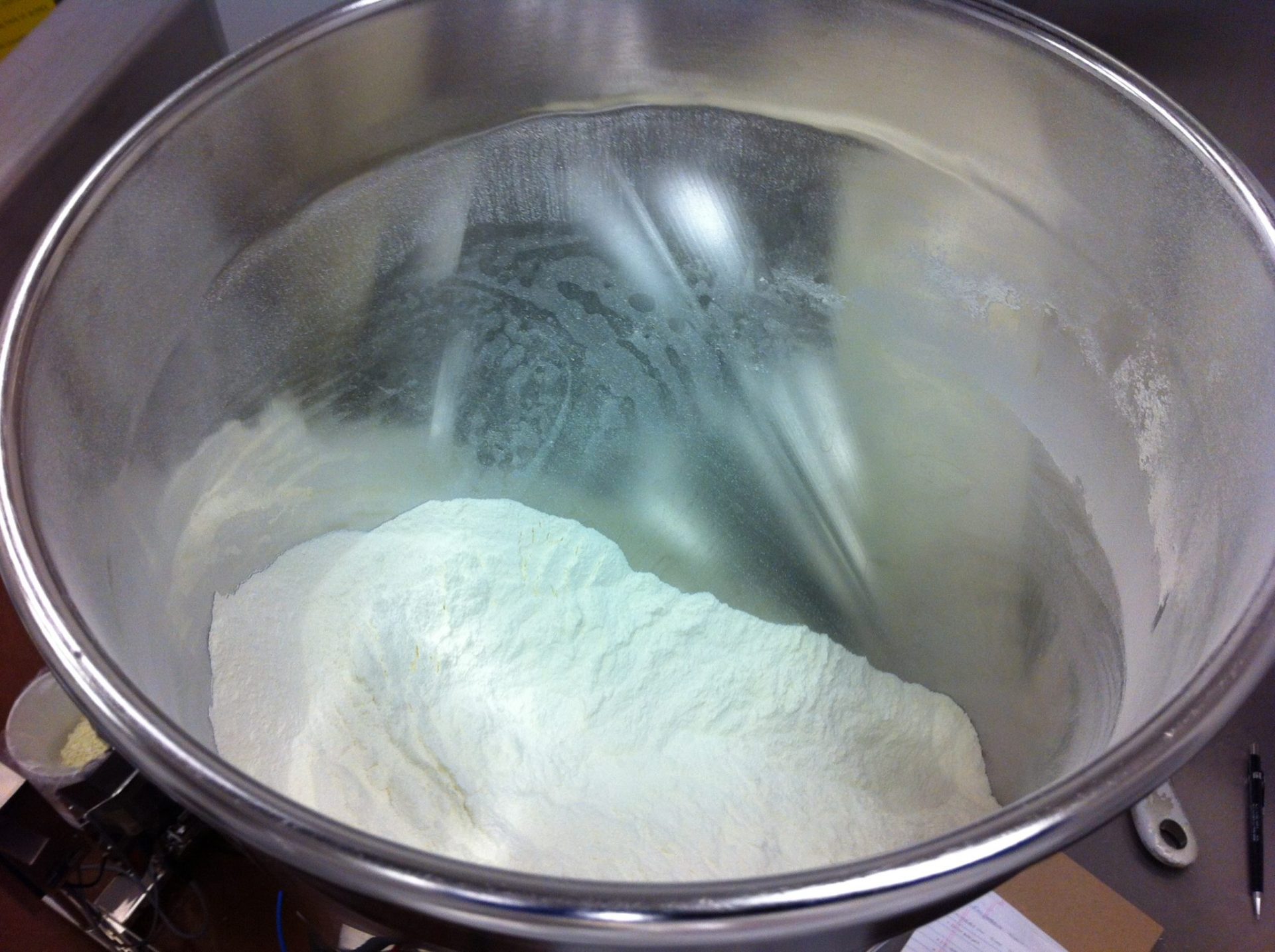
Poor uniformity is often caused by poor blending or segregation between a blending step and the creation of the product, whether the product is still in bulk solid form such as a 50 pound bag or transformed to an end product such as a turbine disk or pharmaceutical tablet. At J&J, we often have clients who contact us with a uniformity problem. The initial call typically starts with a statement saying that their product is failing to meet uniformity requirements, based on some number of samples that were collected, analyzed, and held to some acceptance criteria. At this stage, the path forward at a high level appears well-defined: improve the process or the material itself, to provide better homogeneity. We have the expertise to analyze and solve these problems, based on knowledge of the process and material properties measured in our laboratory.
One aspect that is seldom discussed initially is the aspect of whether or not the sampling plan and acceptance criteria are what is needed in the first place. Sometimes specifications were developed based on best guesses during product development, or long-standing (but poorly understood) history. In some industries, such as pharmaceuticals and some chemicals, there are regulatory requirements that must be met – which may or may not be sufficient to provide customer satisfaction and safety with the product. Even more challenging is understanding and articulating what the customer requirements actually are in terms of acceptable variability. This could be true whether your customer is the end-user or downstream processes.
The most basic starting point is understanding what properties could vary before the product no longer performs as intended or is detected as a defect by the customer. For example, in a cereal with marshmallows mixed in, what range of marshmallows would be acceptable… ±10%? ±20%? A child might say -0/+50% would be fine! Does it matter if the variation is within the box, or within a bowl? Often this information comes from the consumers themselves, through marketing studies and focus groups.

This becomes more critical for products such as pharmaceuticals, where variations in the dosage strength can result in inadequate treatment for too low a dose, to significant side effects for too high a dose. Even when the desired range for a given unit is understood, there needs to be some understanding of the consumer’s risk (of receiving out-of specification product) and the manufacturer’s risk (of rejecting material that might be acceptable to the consumer). Once the desired overall level of uniformity is understood, it then becomes easier to determine sampling plans (locations and number of samples) and acceptance criteria.
These issues have become critical and urgent within the pharmaceutical industry. The FDA has recently announced the withdrawal of the draft Guidance for Industry “Powder Blends and Finished Dosage Units–Stratified In-Process Dosage Unit Sampling and Assessment”. (For those of you in the pharmaceutical industry, please see questions 15-18 in this link: http://www.fda.gov/Drugs/GuidanceComplianceRegulatoryInformation/Guidances/ucm124782.htm)
We are participating in a new group called the Adequacy of Blend Uniformity/Content Uniformity Dialogue Group, sponsored by ISPE, with a mix of industry, FDA, and academia representatives. We plan to help shape the standards which will replace the withdrawn Guidance Document. We would love to jump to the end result along the lines of “take N samples from X locations and have the result fall between this and that”. But long before we do that, we need to understand what is really important to the consumer. What is allowable for the minimum and maximum for a single dose, and how would this be determined? How about the allowable range for a bottle of tablets (could they all be slightly sub-potent, and if so by how much, for example)? How about bottle-to-bottle variability? Batch-to-batch variability? Is a single agglomerate of active a problem? Should the allowable variations be different for different products?
We would love to hear from how you would answer the question “How would you set the allowable variation for a batch of pharmaceutical tablets?” This could be answered whether produced by a batch or continuous manufacturing process. We would be interested in getting answers in the context of development, clinical supplies, validation, and ongoing manufacturing, if you see differentiation that is needed. Once we answer that basic question, we can then set up sampling plans and acceptance criteria to ensure we meet that goal.





